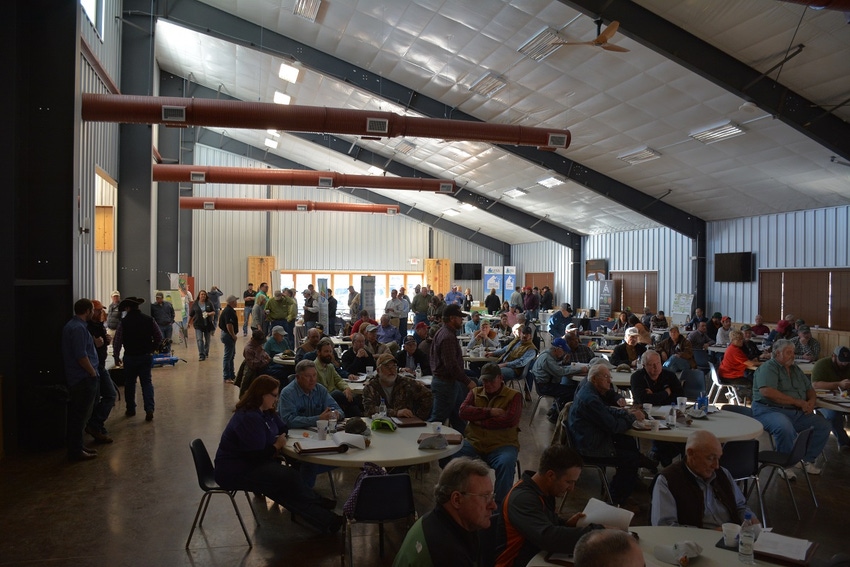
Strengthening the safety net for cotton farmers will be a top priority for the National Cotton Council in 2017, says Jody Campiche, the organization’s director of economics and policy analysis.
Speaking at the 4th annual Red River Crops Conference at Childress, Texas, she said NCC will continue efforts to get cotton back into the farm program as a covered commodity as “other oilseed,” with hopes for a better outcome under a new administration and a new secretary of agriculture from a key cotton state — former Georgia Governor Sonny Perdue.
Adding cottonseed as a covered commodity may be handled either through legislation or be designated by the secretary. Both were attempted last year, but Secretary Tom Vilsack would not designate cottonseed as “other oilseed,” saying it was beyond his legal authority. Congress would not act on it because they delayed an appropriations bill until 2017, opting instead for a continuing resolution.
Campiche says NCC believes they have a better chance of getting cottonseed in an appropriations bill with the new Congress, but challenges remain.
“It must be budget neutral,” she explains. “That means we have to save money somewhere else.” The Stacked Income Protection Plan (STAX) may be an option, she says. If growers enroll in the cottonseed program they would not be eligible for STAX.
LOWER COST OPTIONS
The current reference price for ‘other oilseeds’ is $403/ton. "We are asking for cottonseed to be covered as an ‘other oilseed’, but our proposal includes a lower reference price to get to a budget neutral option. The reference price for cottonseed oil would not be $403/ton. Using the older 2016 CBO baseline, the reference price was generally in the range of $305-$320 to get to a budget neutral option (including a yield update). To achieve budget neutrality, savings from STAX and from generic base payments would be used.
Now, the program will need to be rescored with the new January 2017 CBO baseline. If the baseline is lower and we have fewer offsets from STAX and generic base payments (due to lower expected ARC/PLC payments for corn, soybeans, and peanuts), additional changes will need to be made to achieve budget neutrality and the reference price could be lower (and/or other program parameters could change).
Adding cottonseed would also alter generic base acreage, with cotton taking back acreage as a covered commodity. She says generic base is not likely to be included in the next farm bill.
Any new program should be flexible, she says, with options for farmers across the cotton belt. Cotton farmers would be allowed to update yields, if covered.
“We will keep playing with the numbers to come up with a meaningful safety net,” Campiche says.
“The key is that it be budget neutral.” Next steps, she says, will be encouraging the new secretary of agriculture to designate cottonseed as “other oilseed,” or working with Congress to do it through legislation.
IMPROVED COTTON OUTLOOK
An improving outlook for cotton may be another hurdle, she says. Legislators without a cotton background may look at current prices and expected acreage increases and assume that cotton is doing well. Campiche admits that cotton is looking better, but at current prices and with escalating production costs, farmers continue to have difficulty covering total expenses. For the moment, cotton just looks better than other commodities.
Other NCC priorities for 2017 include rolling back burdensome regulations and preserving important crop protection products for cotton farmers. She says “a long list” of products is under review.
Preserving funds for boll weevil eradication and pink bollworm eradication programs remains a priority, and market access to foreign buyers is also a critical area. Crop insurance quality loss is another area of concern, she says, especially for Southeast growers who suffered significant quality losses in 2015 and 2016, following heavy rains at harvest time.
A pilot program that would allow farmers to buy up quality protection could help make up some of the losses that were not covered, she says. “It could be an important step, but it won’t fix the issue in the Southeast.”
Campiche says the market loan will be lower in 2017, down to 49 cents — the first time in several years it will drop below 52 cents. “It might not matter if the price stays up, and the rate should be back up in 2018. It’s a difficult political issue to deal with because of the Brazil cotton case.”
FRIENDS IN HIGH PLACE
Cotton still has friends in Congress, Campiche says. Along with what many hope will be a less regulatory administration, the new secretary of agriculture comes from a cotton state, and Rep. Mike Conaway, R- Texas, remains chairman of the House Committee on Agriculture.
“He [Conaway] has been a strong supporter for cotton,” Campiche says, and several ag-friendly representatives remain on the Agriculture Appropriations Committee, including Thad Cochran, R-Miss., and Chairman Jerry Moran, R-Kansas. “We have some friends in Congress,” she says
NCC is pleased with the designated head of the Environmental Protection Agency, Scott Pruitt, she says. “We think that’s a great pick.”
NCC and other farm organizations will have some educating to do with the new Congress, Campiche says, especially in the House, where 52 new representatives are taking office. The Senate has seven new members. Of the new House members, 17 are from the cotton belt; two of the seven new senators are from cotton states.
The new administration owes a lot to farm country, she points out. “President Trump won the rural vote by a 3-to-1 margin. That should be an opportunity for agriculture.”
About the Author(s)
You May Also Like






